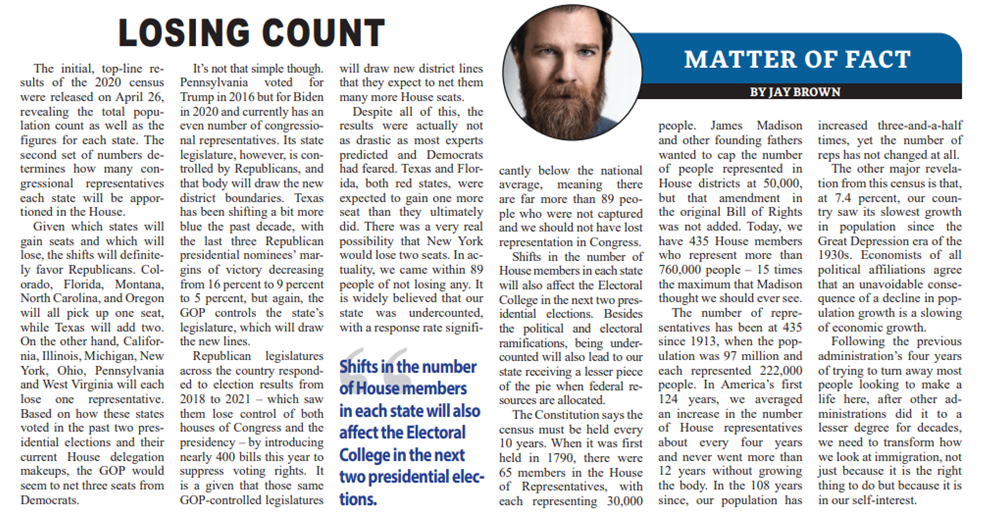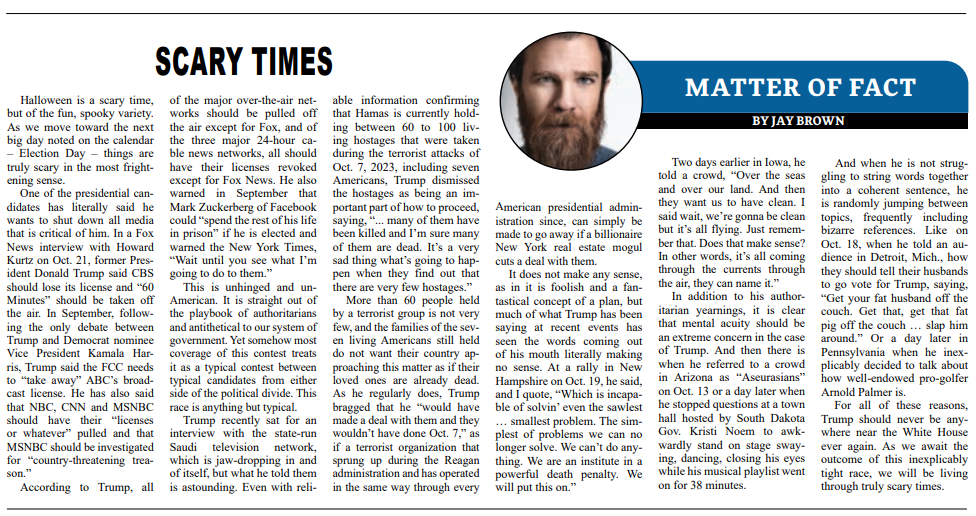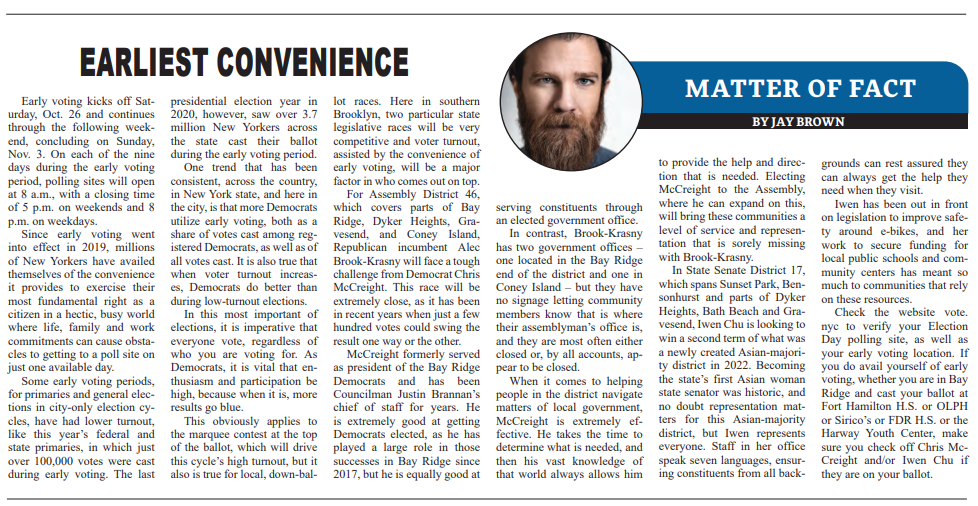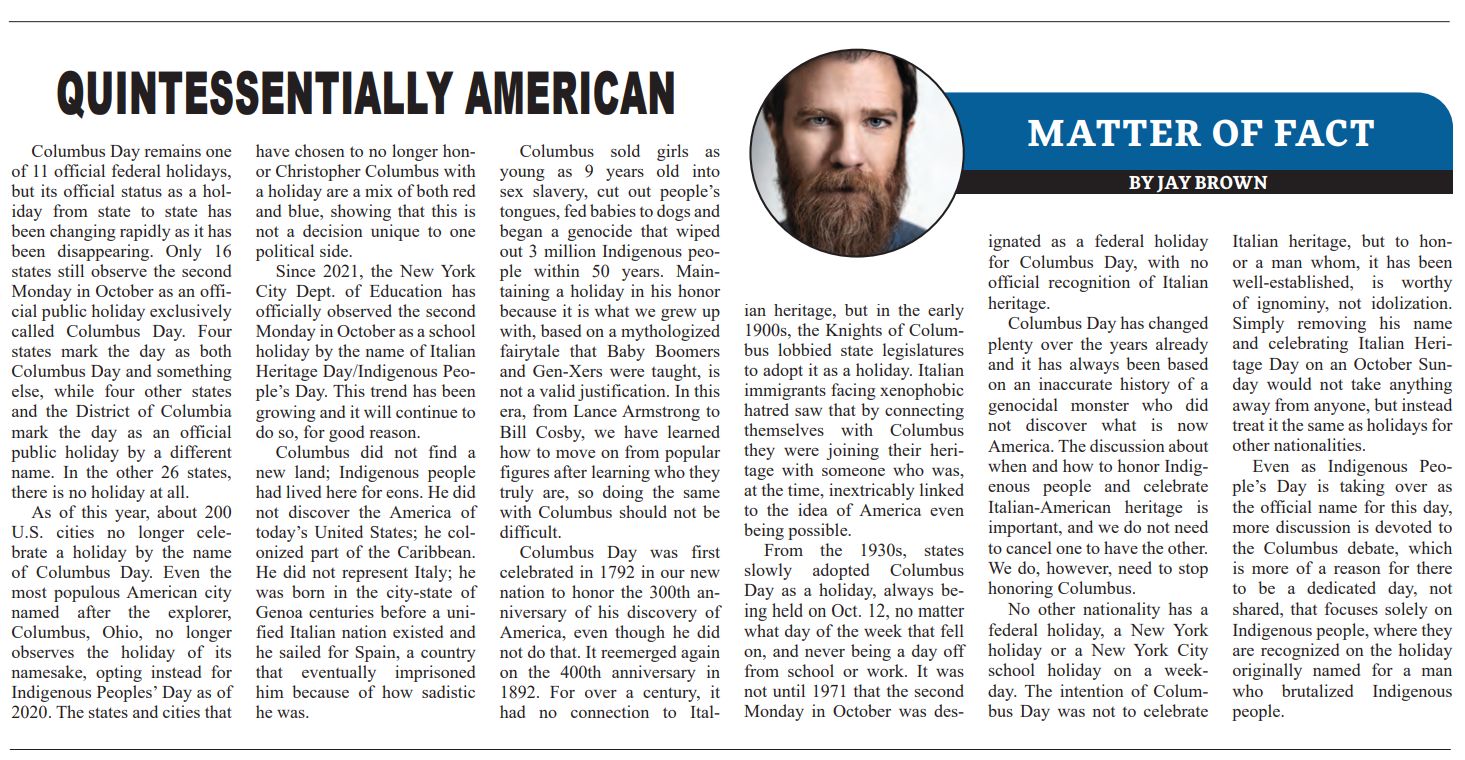This column, from the weekly opinion piece MATTER OF FACT, first appeared on BrooklynReporter.com, the Home Reporter and Spectator dated MONTH DAY, 2021
The initial, top-line results of the 2020 census were released on April 26, revealing the total population count, as well as the figures for each state. The second set of numbers determines how many congressional representatives each state will be apportioned in The House.
Given which states will gain seats and which will lose, the shifts will definitely favor Republicans. Colorado, Florida, Montana, North Carolina, and Oregon will all pick up one seat, while Texas will add two. On the other hand, California, Illinois, Michigan, New York, Ohio, Pennsylvania, and West Virginia will each lose one representative. Based on how these states voted in the past two presidential elections and their current House delegation makeups, the GOP would seem to net 3 seats from Democrats.
It is not that simple though. Pennsylvania voted for Trump in 2016 but for Biden in 2020 and they currently have an even number of congressional representatives. Their state legislature, however, is controlled by Republicans, and that body will draw the new district boundaries. Texas has been shifting a bit more blue the past decade, with the last three Republican presidential nominees’ margins of victory decreasing from 16 percent to 9 percent to 5 percent, but again, the GOP controls the state’s legislature, which will draw the new lines.
Given that Republican legislatures across the country have responded to election results from 2018 to 2021 that saw them lose control of both houses of Congress and the presidency, by introducing nearly 400 bills this year to suppress voting rights, it is a given that those same GOP-controlled legislatures will draw new district lines that they expect to net them many more House seats.
“In America’s first 124 years, we averaged an increase in the number of House representatives about every four years and never went more than twelve years without growing the body. In the 108 years since, our population has increased three-and-a-half times, yet the number of reps has not changed at all.”
Despite all of this, the results were actually not as drastic as most experts predicted and Democrats had feared. Texas and Florida, both red states, were expected to gain one more seat than they ultimately did. There was a very real possibility that here in New York, we would lose two seats. In actuality, we came within 89 people of not losing any. It is universally accepted that our state was undercounted, with a response rate significantly below the national average, meaning there are far more than 89 people who were not captured and we should not have lost representation in Congress.
Shifts in the number of House members in each state will also affect the electoral college in the next two presidential elections. Besides the political and electoral ramifications, being undercounted will also lead to our state receiving a lesser piece of the pie when federal resources are allocated.
The Constitution states that the census must be held every ten years. When it was first held in 1790, there were 65 members in the House of Representatives, with each representing 30,000 people. James Madison and other founding fathers wanted to cap the number of people represented in House districts at 50,000, but that amendment in the original Bill of Rights was not added. Today, we have 435 House members that represent over 760,000 people, fifteen times the maximum that Madison thought we should ever see.

The number of representatives has been at 435 since 1913 when the population was 97 million and each represented 222,000 people. In America’s first 124 years, we averaged an increase in the number of House representatives about every four years and never went more than twelve years without growing the body. In the 108 years since, our population has increased three-and-a-half times, yet the number of reps has not changed at all.
The other major revelation from this census is that, at 7.4 percent, our country saw its slowest growth in population since the Great Depression era of the 1930s. Economists of all political affiliations agree that an unavoidable consequence of a decline in population growth, is a slowing of economic growth.
Following the previous administration’s four years of trying to turn away most people looking to make a life here, after other administrations did it to a lesser degree for decades, we need to transform how we look at immigration, not just because it is the right thing to do – it is – but because it is in our own self-interest, as well.




